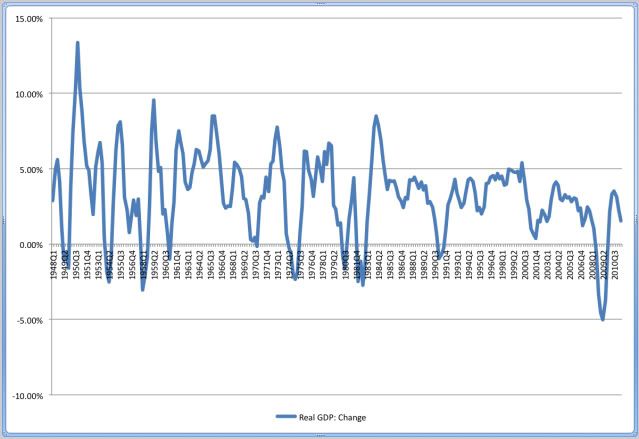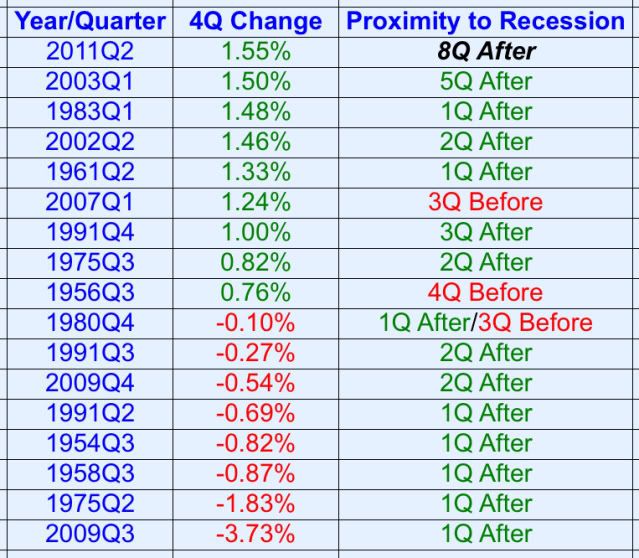Moreover, I think there is an intermediate probability this event will be a fait accompli by the end of the second half of this year.
One reason I reached these conclusions centers on my recent historical statistical study of the real gross domestic product (GDP) data series publicly available on the Department of Commerce's Bureau of Economic Analysis (BEA) Web site.
Methodologically, I began by calculating the percentage change in real GDP for each rolling four-quarter period in the quarterly data series, which ranges between 1947's first quarter (1947Q1) and 2011's second quarter (2011Q2). Naturally, the 1947 data constitute the baseline. Below is a chart with an overview of the results of these calculations:
Real GDP: Percentage Change During Rolling
Four-Quarter (4Q) Periods, 1948Q1-2011Q2

Source: Risky Business Analysis and Chart Based on BEA Data
Basically, there are 254 data points in the series. The median value is 3.18%, the mean value is 3.25%, and the standard deviation is 2.76%.
Employing the most recently recorded value of 1.55% as my dividing line, I found 197 data points are higher and 56 data points are lower.
For the purpose of this study, I was uninterested in the comparatively high 197 values, but I was interested in the relatively low 56 values, which I examined in terms of their proximity to U.S. economic contractions as determined by the National Bureau of Economic Research's Business Cycle Dating Committee.
I found 40 of them were registered during recessions and 16 of them were registered within five quarters of recessions (i.e., either before or after contractions). Both the latter group of data points and the most recently recorded value of 1.55% are shown in the following table:
Real GDP: Percentage Change Over Rolling
4Q Periods and Proximity to Recession, 17 Quarters

Source: Risky Business Analysis and Table Based on BEA Data
Based not only on the data I have examined in this table in particular but also on the data I have examined in this study in general -- as well as other sources, such as the proprietary U.S. Economic Index (USEI) discussed in "You Got to Know When to Hold 'em" -- I am convinced the most recently recorded value of 1.55% is more likely to be associated with the next recession than it is to be associated with the last recession.
Could my conviction be misplaced? Sure. For example, I remember well the 2004 New York Yankees, unique in the annals of Major League Baseball as the only team to lose a seven-game playoff series subsequent to taking a 3-0 lead in the same series (i.e., there are no sure things -- not in baseball, not in the economy, not in the financial markets, and not in life).
No comments:
Post a Comment